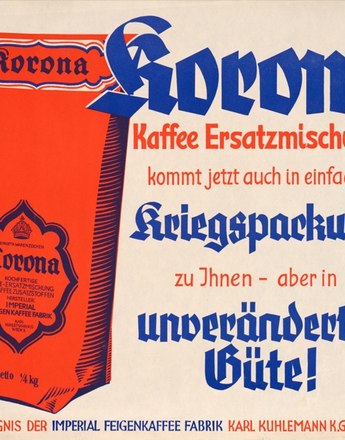During the First World War, schools constituted a central plank in the campaign of mobilization. As early as the summer of 1914 the war was comprehensively integrated into the timetable as a subject of study, with droves of educational experts, schoolteachers and nursery school staff placing themselves at the service of war propaganda.
The militarization and indoctrination of school children had antecedents in the late nineteenth century. Since that time military codes of conduct had gradually penetrated many spheres of life. Military-style manners and educational methods shaped pedagogical thinking, and many teachers barked their instructions in the classroom like military commands.
On the outbreak of war schools embarked on a comprehensive programme to integrate children into the ‘culture of war’. The progress of the war became an important point of reference in lessons. Most teachers regarded themselves as agents of war propaganda, with the result that on the whole the prevailing mood in schools was one of patriotism and approval for the war.
Teaching was intended to provide constant fuel for the children’s enthusiasm for the war, and through the use of emotive techniques promote their identification with the war’s objectives. Books, patriotic songs and other educational materials helped teachers to integrate the war into the different subjects in a diversity of ways. Children were exhorted to explore the war creatively in essays, poems and drawings. A widespread phenomenon was the so-called Kriegsstunde, that is, a lesson which focused on the current war situation in keeping with official propaganda. Nationalistic songs were sung, the progress of the war explained, front lines pinpointed on military maps and the course of battles charted. Classes also commemorated fallen heroes and prayed together for the troops at the front.
Initially the war tended to be romanticized in schools. Faced with the massive onslaught of propaganda, children and teenagers had a largely undifferentiated perspective on the war, and in its first months were swept up in the general enthusiasm. However, this initial euphoria began to wane as the effects of the war began to be felt in everyday life. Lessons were frequently cancelled, teachers were called up and pupils increasingly suffered from mental and physical exhaustion. Children’s health deteriorated as food became scarcer, and their performance at school declined sharply. The euphoric celebrations of certain victory at the beginning of the war gave way to memorial services for teachers and fellow-pupils who had fallen on the battlefield. The radiant glory of heroism disappeared from the children’s essays and drawings, which now tended to focus on the horrors of war, the absence of brothers and fathers and the presence of death.
Translation: Sophie Kidd
Audoin-Rouzeau, Stephane: Kinder und Jugendliche, in: Hirschfeld, Gerhard/Krumeich, Gerd/Renz, Irene (Hrsg.), Enzyklopädie Erster Weltkrieg, Paderborn/München/Wien/Zürrich 2009, 135-141
Demm, Eberhard: Deutschlands Kinder im Ersten Weltkrieg. Zwischen Propaganda und Sozialfürsorge, in: Militärgeschichtliche Zeitschrift 60/2001, 51-79
Heckmann, Gerhard: Das zweite Heer des Kaisers. Schule und Jugend im Krieg, in: „Als der Krieg über uns gekommen war...“ Die Saarregion und der Erste Weltkrieg. Katalog zur Ausstellung des Regionalgeschichtlichen Museums im Saarbrücker Schloß. Saarbrücken 1993, 141-155
Rauchfleisch, Udo: Kinder und der Krieg, in: „So ist der Mensch…“ 80 Jahre Erster Weltkrieg. 195 Sonderausstellung Historisches Museum der Stadt Wien, Wien 1994, 33-41
Saul, Klaus: Jugend im Schatten des Krieges. Vormilitärische Ausbildung, Kriegswirtschaftlicher Alltag, Schulalltag in Deutschland 1914-1918, in: Militärgeschichtliche Mitteilungen (1983), 34, 91-118









